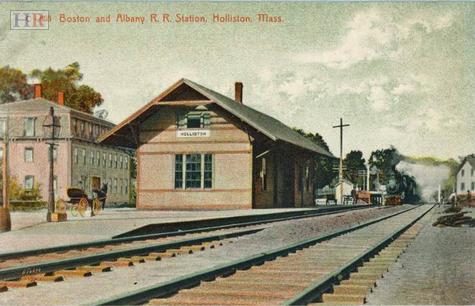Letters from the Attic

This is a chronicle of one particular family whose ancestors were among the 20,000 English immigrants who sailed to America between 1629 and 1641. Several family members aligned themselves throughout their lives as friends and correspondents and left for documentarians of the family a rich resource of ordinary life in eastern New England during the nineteenth century. The text consists largely of direct quotations, varying from snippets, to abbreviated letters, to entire unabridged letters. There are a few letters that are held privately and their use is greatly appreciated. The quoted material is closely accompanied by explanatory text that places it in pertinent context so far as is reasonably possible. Explanations may precede, follow, or interrupt the text.
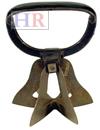 The Bullard’s who were born in the nineteenth century were not famous. The farm was not a stop on the Underground Railroad. They were not the authors of books, or painters, or explorers. No printed biographies incorporate their challenges and accomplishments because their lives were not remarkable. Within their own daily lives however, their thoughts and work on the farm were significant. They were not celebrated citizens but rather the children of an ordinary, solidly middle-class, upwardly-mobile farming family related by marriage to the fringes of famous lives. Self-improvement was expected for both the men and women of the family, whether through education, business or matrimony.
The Bullard’s who were born in the nineteenth century were not famous. The farm was not a stop on the Underground Railroad. They were not the authors of books, or painters, or explorers. No printed biographies incorporate their challenges and accomplishments because their lives were not remarkable. Within their own daily lives however, their thoughts and work on the farm were significant. They were not celebrated citizens but rather the children of an ordinary, solidly middle-class, upwardly-mobile farming family related by marriage to the fringes of famous lives. Self-improvement was expected for both the men and women of the family, whether through education, business or matrimony.
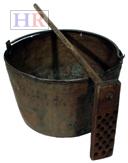 A visitor to the Bullard farm in the 1850's would have been introduced to these children, indeed to any member of the family, in relation to the rest of the family living there. Their words and actions would have defined them and would have revealed the prevailing philosophy of their lives. Visit the Bullard farm today and at first glance, they are gone. We have only photographs and portraits of the women and men who lived here. Few of their descendants have any idea who they were or what they did. What is left is the conventional detritus of a fairly unremarkable family.
A visitor to the Bullard farm in the 1850's would have been introduced to these children, indeed to any member of the family, in relation to the rest of the family living there. Their words and actions would have defined them and would have revealed the prevailing philosophy of their lives. Visit the Bullard farm today and at first glance, they are gone. We have only photographs and portraits of the women and men who lived here. Few of their descendants have any idea who they were or what they did. What is left is the conventional detritus of a fairly unremarkable family.
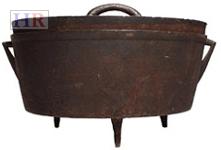 Much of what remains at the farm are what would be considered women’s tools, the sewing machine, the butter paddles, the cast iron cookware, the furniture. The tools of cider making and farming are in some cases the buildings themselves. Other than the cider press and the blacksmith shop, there are only a few leftover shovels and a bung for a cider barrel, the majority of the men’s large equipment is gone but the work can be found in the journals. As for the women, we see from their clothing that they were small women with narrow feet and tiny hands. From the tools that remain, the heavy cast iron cooking pots, the “modern” pedal-powered sewing machine, knives, buckets, and butter paddles we come to understand that they were strong and capable women. From their artwork, needlework and reading material we find that they were both knowledgeable and inventive. Each tool, book, or bonnet reveals the woman indirectly. The day-to-day lives of these women and men are unremarkable. What is extraordinary is that anything of these ordinary people remains at all.
Much of what remains at the farm are what would be considered women’s tools, the sewing machine, the butter paddles, the cast iron cookware, the furniture. The tools of cider making and farming are in some cases the buildings themselves. Other than the cider press and the blacksmith shop, there are only a few leftover shovels and a bung for a cider barrel, the majority of the men’s large equipment is gone but the work can be found in the journals. As for the women, we see from their clothing that they were small women with narrow feet and tiny hands. From the tools that remain, the heavy cast iron cooking pots, the “modern” pedal-powered sewing machine, knives, buckets, and butter paddles we come to understand that they were strong and capable women. From their artwork, needlework and reading material we find that they were both knowledgeable and inventive. Each tool, book, or bonnet reveals the woman indirectly. The day-to-day lives of these women and men are unremarkable. What is extraordinary is that anything of these ordinary people remains at all.
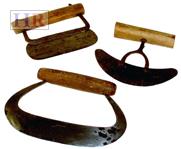 Hovey* Bullard and his sister Fannie Bullard Kingsbury; their cousin Jenny Wight Hastings, and their Aunt Rebecca Bullard Whiting all corresponded with their sister, cousin and niece, Alice Bullard and each other. This small group of people provides a fairly complete documentation of large portions of their lives and the goings on of an extended family over more than a half century. Alice’s father, Henry Bullard kept a daily record of his farm and life. He noted who visited, called or worked on the farm. Henry wrote in his diary six days a week for most of his life. Although primarily an account of his farm work, Henry’s diaries also chronicle some of the major events in his family’s life. From 1845 through 1862 Henry’s diaries were contained in one volume and consisted of one line per day for eighteen years. After 1863 the diaries were physically much larger volumes and Henry was able to devote several sentences each day to his record. His wife Bethia and daughters kept diaries as well, although most of those are unavailable to researchers and what is available is meager. By studying the available diaries, available receipts, cash books and ledgers it is often possible to recreate a day in the life of Henry Bullard. The excerpts found here were originally printed in the Bullard Bulletin. A few of Alice Bullard’s diaries are held at the farm.
Hovey* Bullard and his sister Fannie Bullard Kingsbury; their cousin Jenny Wight Hastings, and their Aunt Rebecca Bullard Whiting all corresponded with their sister, cousin and niece, Alice Bullard and each other. This small group of people provides a fairly complete documentation of large portions of their lives and the goings on of an extended family over more than a half century. Alice’s father, Henry Bullard kept a daily record of his farm and life. He noted who visited, called or worked on the farm. Henry wrote in his diary six days a week for most of his life. Although primarily an account of his farm work, Henry’s diaries also chronicle some of the major events in his family’s life. From 1845 through 1862 Henry’s diaries were contained in one volume and consisted of one line per day for eighteen years. After 1863 the diaries were physically much larger volumes and Henry was able to devote several sentences each day to his record. His wife Bethia and daughters kept diaries as well, although most of those are unavailable to researchers and what is available is meager. By studying the available diaries, available receipts, cash books and ledgers it is often possible to recreate a day in the life of Henry Bullard. The excerpts found here were originally printed in the Bullard Bulletin. A few of Alice Bullard’s diaries are held at the farm.
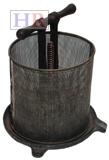 *Rhymes with lovey-dovey. James Hovey Bullard was named in honor of his great-uncle James Hovey Sargent, surgeons-mate and garrison officer at Fort Independence, Boston Harbor (among many).
*Rhymes with lovey-dovey. James Hovey Bullard was named in honor of his great-uncle James Hovey Sargent, surgeons-mate and garrison officer at Fort Independence, Boston Harbor (among many).
The letters embody varied formats, usages, and spellings, and like-sounding nicknames identify several different individuals. I have tried to remain true to their feeling without creating excessive difficulty for the reader by wherever possible using standardized spelling, by adding some punctuation as necessary in what appear intended as sentences and by consistency in expressing nicknames.
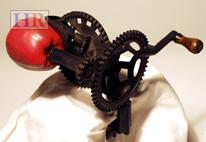 In the early part of the century, life generally moved only as fast as the old horse could trot through the village. For generations the family measured the days by the passing seasons and the years by the size of the harvest. As their lives progressed, and the era of farming for a living became less and less profitable, Henry Bullard’s sons and daughters moved away, as many of their generation did, from the farm and into businesses and professions as their chief means of supporting a family. As they grew older and the twentieth century approached and then advanced they begin to see the old century with a sad fondness and perhaps a certain longing for what had been lost. They were part of the generation who explored and exploited the west. They, more than any generation previously, had the opportunity and the education which allowed them to swallow a continent whole. They were surprisingly modern and yet extremely narrow-minded in ways which make us cringe as we recognize fear, misconception and bias. They were the generation of Americans who shaped who we have become.
In the early part of the century, life generally moved only as fast as the old horse could trot through the village. For generations the family measured the days by the passing seasons and the years by the size of the harvest. As their lives progressed, and the era of farming for a living became less and less profitable, Henry Bullard’s sons and daughters moved away, as many of their generation did, from the farm and into businesses and professions as their chief means of supporting a family. As they grew older and the twentieth century approached and then advanced they begin to see the old century with a sad fondness and perhaps a certain longing for what had been lost. They were part of the generation who explored and exploited the west. They, more than any generation previously, had the opportunity and the education which allowed them to swallow a continent whole. They were surprisingly modern and yet extremely narrow-minded in ways which make us cringe as we recognize fear, misconception and bias. They were the generation of Americans who shaped who we have become.
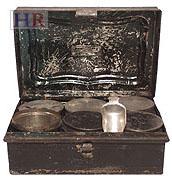 Other resources for understanding the lives of the Bullard letter writers and the people they write about can be found in the books of The Bullard Series from Bullbrier Press. For an in-depth look at New England village and farm life in the mid-nineteenth century visit Old Sturbridge Village, a living history museum in Sturbridge, Massachusetts. The Bullard Collection can be accessed by appointment and free of charge at the Old Sturbridge Village Research Library.
Other resources for understanding the lives of the Bullard letter writers and the people they write about can be found in the books of The Bullard Series from Bullbrier Press. For an in-depth look at New England village and farm life in the mid-nineteenth century visit Old Sturbridge Village, a living history museum in Sturbridge, Massachusetts. The Bullard Collection can be accessed by appointment and free of charge at the Old Sturbridge Village Research Library.
© Copyright 2012, Martha L. DeWolf
(Pictures of kitchen equipment from: http://digital.lib.msu.edu/projects/cookbooks/html/museum.html)
